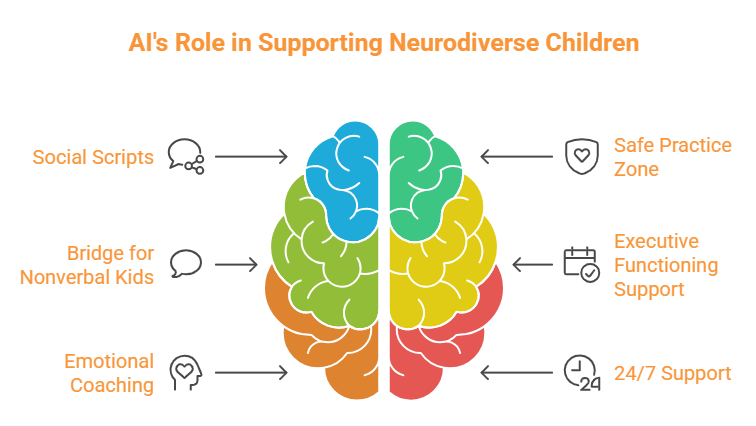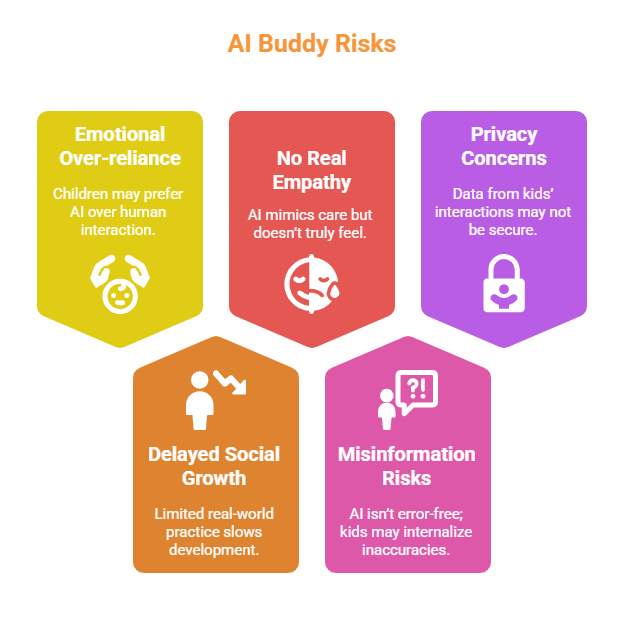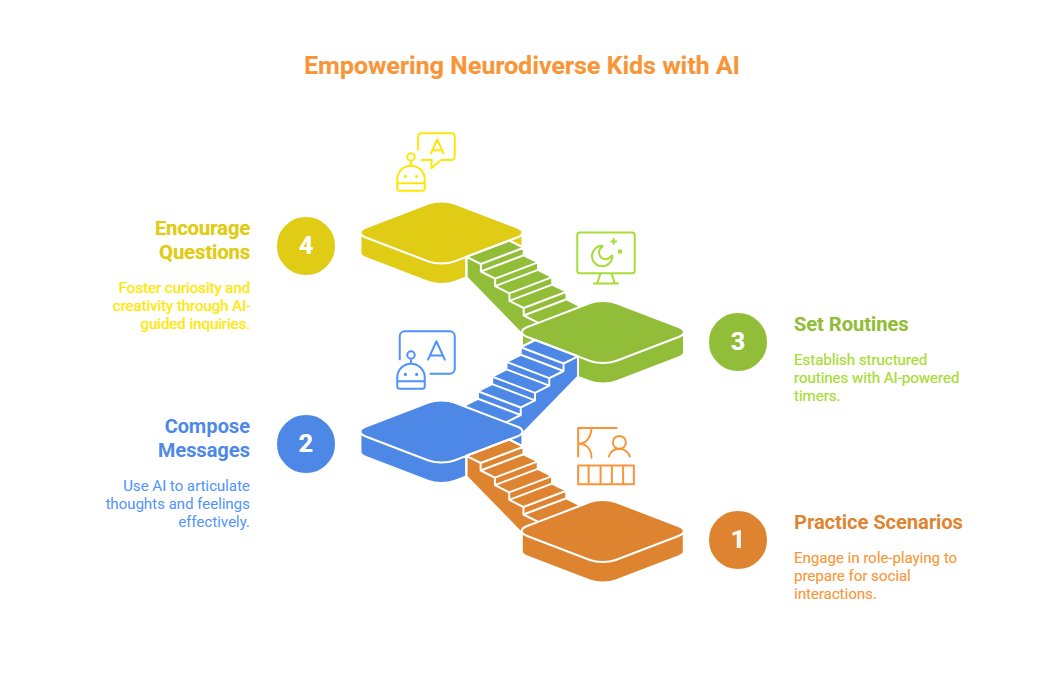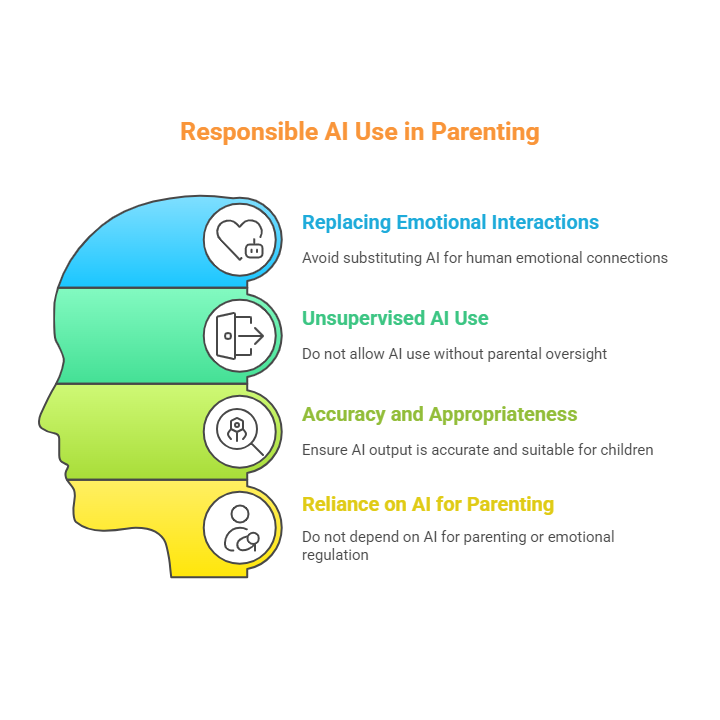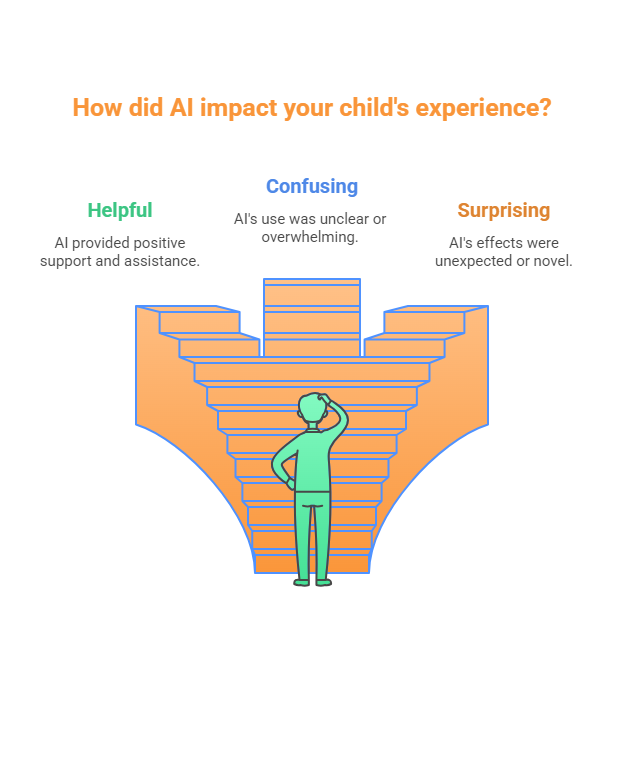Neurodiversity and AI
What Every Parent Should Know
When AI Becomes the Helper in the Room
Raising a neurodivergent child can feel like decoding a secret language every day.
What if a tool could help them communicate needs, rehearse feelings, or practice social cues in a patient, judgment‑free space?
Thanks to AI advancements like ChatGPT, that possibility is real. But it’s also complex.
Let’s break it down—parent to parent.
🧠 What AI Can Actually Do for Neurodiverse Kids
✅ Pros
Social scripts without pressure — Walk kids through conversations or emotions without the need for another person.
Safe practice zone — “No eye contact, no judgment” for practicing tone and empathy.
Bridge for nonverbal kids — Text-to-speech and visual AI tools help translate thoughts to words.
Help with executive functioning — Use AI planners to break down routines into manageable steps.
Emotional coaching — AI can gently reflect tone and mood, offering calm feedback.
24/7 support — AI tools are always available when parents need backup.
❌ Cons
Emotional over‑reliance — Risk of children preferring their AI buddy over human interaction.
Delayed social growth — Limited real-world practice can slow emotional and conversational development.
No real empathy — AI mimics care, but it doesn’t truly feel or understand.
Misinformation risks — AI isn’t error-free; kids may internalize inaccuracies.
Privacy concerns — Data from kids’ interactions may not be secure or designed for child users.
👨👩👧👦 How Parents Can Use AI the Right Way
✅ DO:
Practice real-world scenarios before school or social events
Use AI to help compose messages, notes, or feelings
Set fun, AI-powered timers or step-by-step routines
Encourage creative and playful questions
❌ DON’T:
Let AI replace face-to-face or emotionally sensitive interactions
Allow unsupervised, open-ended AI use
Assume AI output is always accurate or kid-appropriate
Rely on AI for parenting, disciplining, or emotional regulation
💡 Pro Tips Most Parents Miss
Use visuals or pictograms alongside AI dialogues
Adjust voice speed to fit auditory processing needs
Co-engage: use AI with your child so learning happens together
🧡 Why This Matters
Every neurodiverse child deserves tools that meet them where they are. Each parent deserves support, insight, and a sense of community. AI should serve as a thoughtful tool—not a replacement—for human connection and growth.
💬 What Do YOU Think?
Have you tried using AI with your child?
Did it help, confuse, or surprise you?
👇🏽 Share your experience to help other parents feel seen, supported, and empowered.
Infographic asking about your personal experience using AI with your child.

